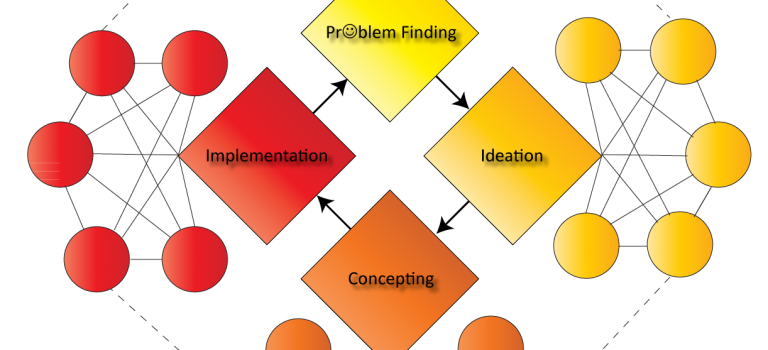Over the last few month, the phrase “Responsible Innovation” has been booming on scientific social media. It has emerged from Corporate Social Responsibility as a topic that researches the effect and consequences of innovation on the long term. This could be technological effects, antropological effects or ethical effects.
The fundament of this research topic lies in the Collingridge Dilemma:
The Collingridge dilemma is a methodological quandary in which efforts to control technology development face a double-bind problem: an information problem – impacts cannot be easily predicted until the technology is extensively developed and widely used – and a power problem – control or change is difficult when the technology has become entrenched.
The way to start innovating in order to enhance responsible innovation is three-fold:
1. Value-consciousness in design, research and development: this aspect means that design or R&D should start with a clear answer to the ‘why of innovation’. In other words: does this idea or design provide a solution to one of the grand challenges that we are facing in 5, 10 or 30 years? Values are the key to those answers.
2. Ethical Parallel Research: every step of the innovation management funnel should be taken with the influence of ethical researchers and if possible, also researches from other parallel industries. This way, the impact that the innovation has on the long term can be easily addressed and tackeled early stage.
3. Constructive Technology Assessment: innovation teams shouldn’t be monodisciplinary, but multidisciplinary. That way, early-stage innovation (ideas) can be assessed and tested upon. Multidisciplinary teams form the basis of Open Innovation.
If you are interested in the material, take into account the following material:
Responsible Innovation: Managing the Responsible Emergence of Science and Innovation in Society
Science and innovation have the power to transform our lives and the world we live in – for better or worse – in ways that often transcend borders and generations: from the innovation of complex financial products that played such an important role in the recent financial crisis to current proposals to intentionally engineer our Earth’s climate. The promise of science and innovation brings with it ethical dilemmas and impacts which are often uncertain and unpredictable: it is often only once these have emerged that we feel able to control them. How do we undertake science and innovation responsibly under such conditions, towards not only socially acceptable, but socially desirable goals and in a way that is democratic, equitable and sustainable? Responsible innovation challenges us all to think about our responsibilities for the future, as scientists, innovators and citizens, and to act upon these.
The Importance of Responsible-Innovation and the Necessity of ‘Innovation-Care’
This study deals with responsibility as part of innovation. By nature, innovation gives birth to development for the organization and can only be at the core of any strategy within an ever-increasingly global economic context. However it also raises new questions stemming mostly from the impossibility to forecast the success of the innovations. More precisely, the questions raised by innovation also concern its consequences on society as a whole. Today, the innovator should understand his responsibility, the consequence of each innovation.
Moreover, common acceptance of the word ‘responsibility’ raises some questions about its use and how it should be understood. What does ‘responsibility’ mean? Who is responsible and for what? Through the notion of ‘care’, we aim at providing an evolution of responsible-innovation. The concept of ‘innovation-care’ is centered on people and more precisely focuses on taking care of them. The purpose of innovation-care is indeed to innovate and keep up with the level of productivity necessary to any organization while taking into account the essential interdependence between the status of the innovator and that of the citizen.
Enhancing Socially Responsible Innovation in Industry
This thesis presents a study that aims to explore to what extent corporate researchers in the field of industrial Life Science & Technology (LST) can consider social and ethical aspects of LST innovation to improve their Research and Development (R&D) practices. Innovators, particularly those working in controversial scientific and technology fields such as industrial LST, are encouraged to adopt socially responsible innovation methods. This requires that researchers, who work in such fields, consider the broader social and ethical context of their R&D activities.
The presented study explores first how corporate researchers can integrate such aspects in their daily work and how this could improve their work. Second it investigates whether such integration leads to a quantitatively assessable improvement of the quality of R&D. The results indicate that integration is possible, and leads to a measurable improvement of the quality of R&D work. In addition, researchers see a number of improvements in their R&D work, e.g. in the quality of communication and cooperation, and how to link their own work to corporate strategies and marketing. This thesis can be useful for innovators who wish to enhance socially responsible innovation practices, as it presents a tool for R&D management that allows for the operationalisation of socially responsible innovation and improved R&D performance.
First annual conference Responsible Innovation
